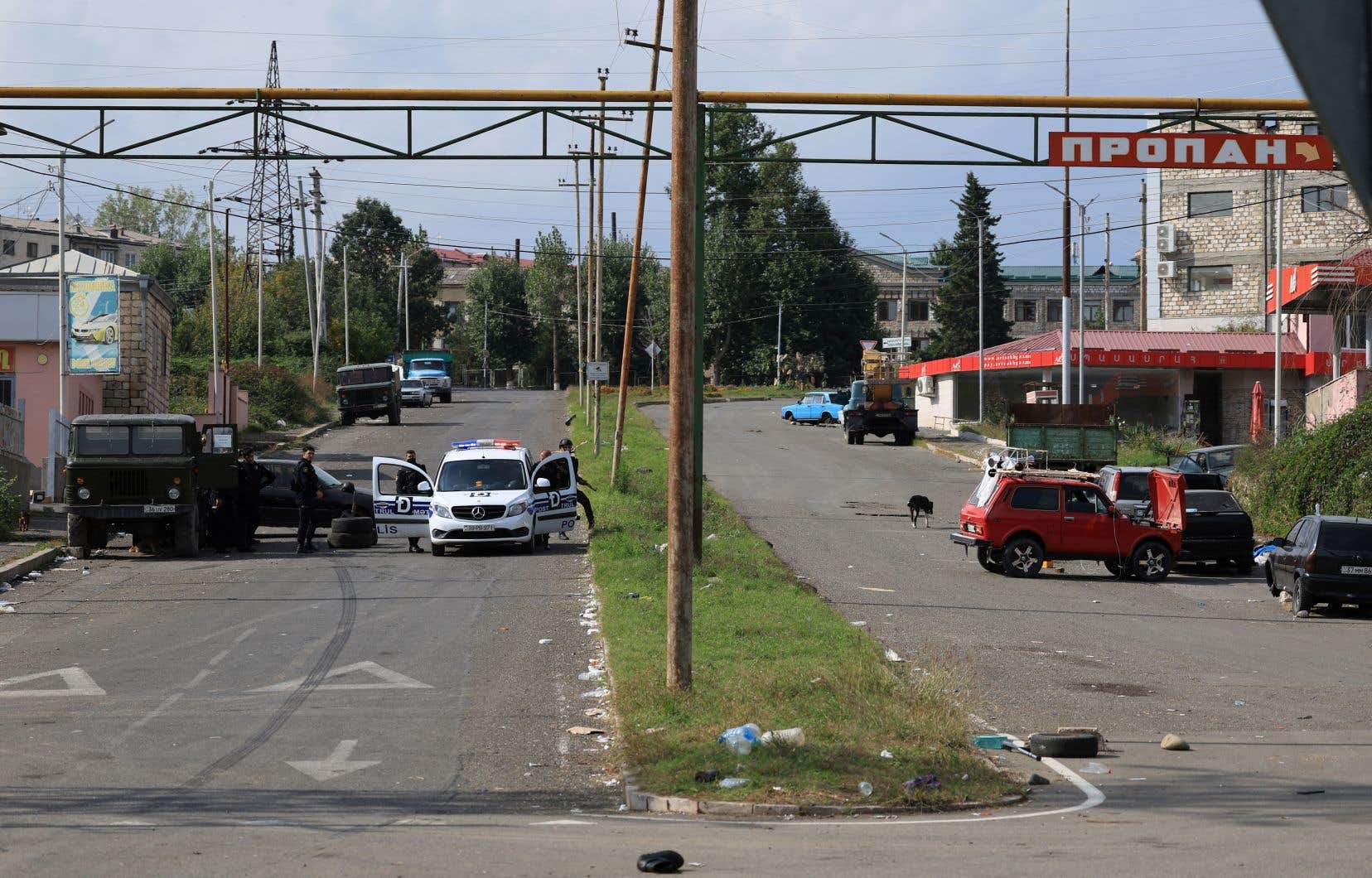Azerbaijan and Armenia stare at each other in the silence returned from the mountains. The Lachin border post, between Armenia and Nagorno-Karabakh, the only road connecting the two territories, is now plunged into torpor.
After nine days of panic and a continuous exodus of Armenians from the enclave on the winding road, the border is deserted, AFP journalists noted during a visit organized by the Azerbaijani authorities.
On the left hill, the Armenian flag and civilian volunteers waiting for the last refugees to be taken care of.
In the middle, a bridge, on which is positioned an armored vehicle of the Russian army, which has served as an interposition force in Nagorno-Karabakh since the 2020 war. Fifty meters further, the Azerbaijani border guards, fixed on their binoculars and their checkpoint.
Under the awning equipped with latest generation intelligent cameras, only one vehicle is present.
The antediluvian courier khaki brinquebale right up to the Azerbaijani customs officers and their digital tablets. A pile of trinkets, mattresses, furniture and a bicycle are tied up balanced on its roof.
“You can stay”
Armenian Sergei Astsarian presents his papers. The 40-year-old trader finally decided to leave the capital of the enclave, after realizing, he said, that he was in Stepanakert “alone, like the last of the Mohicans remaining there”.
The father feared being stuck for good. Despite calls from the Baku authorities to stay, he ended up choosing to leave, saying that he was waiting for “concrete guarantees” and not just “verbal” ones about the future.
“I spoke with the police and they said: ‘You can stay.’ I said, “For what?” », he testifies.
“But if we want to go back, they said: ‘No problem, you can live in your houses. And those who lived in Azerbaijani houses will build new ones,” the refugee told AFP.
In the 1990s, a previous conflict between Baku and Yerevan, this time won by Armenia, forced tens of thousands of Azerbaijanis to flee Nagorno-Karabakh. At home, the victory against the separatists revives dreams of return.
“I don’t think that the entire population will come back here, these problems had to be resolved between the two governments… There really was no need for this war,” said Sergei Astsarian, who hopes to find his loved ones in Europe.
After a quick check, the rusty courier moves slowly towards the huge gray portal deployed in the middle of the bridge, an X-ray scanner.
Sergei Astsarian walks towards the Armenian flag, without a glance behind him.
Charred Lada
Going up the road he has just taken, through which up to 100,000 people passed in a week according to Yerevan – a figure disputed by Baku – the spectacle of desolation is striking.
A charred Lada, a pink stroller among the brambles, a children’s dinette, an elegant hat, a bathtub, bicycles, hundreds of bottles, leftover meals and remains of a lifetime… Over five kilometers, the mountain is littered of objects abandoned by Armenians caught in traffic jams when fleeing.
On the steep road which winds through the hills pointing like needles towards the sky, checkpoints of Russian barrier guards follow one another in each valley. No Azerbaijani military in sight, only police and internal security forces.
In Lissagorsk, a yellow minibus with its trunk open on a mountain of suitcases and registered in Armenia, makes a stop under the Moscow flag. It is filled with around fifteen old men who look at the foggy road through the dirty window while waiting to continue the evacuation.
They refuse to say where they are from or talk to the press about themselves.
Red Cross
Very little information filters out on the situation in Stepanakert, deserted by its population (55,000 inhabitants), after the lightning and victorious offensive in Baku and the capitulation of the separatists on September 20.
The city, which Baku calls Khankendi, is still inaccessible to the press for “security” reasons.
For the first time in 30 years, a UN mission arrived in the enclave on Sunday to assess the humanitarian needs there.
The white trucks of the International Committee of the Red Cross, rare humanitarian workers able to enter and leave the enclave, were also visible on the road to Lachin.
The Committee says it focuses “on life-saving activities”, such as the transfer of wounded to Armenia or the delivery of medical supplies.
But its volunteers are also responsible for the very delicate question of the transfer of bodies and the “dignified management of the dead” in the face of the “massive influx of corpses” observed in the enclave.
